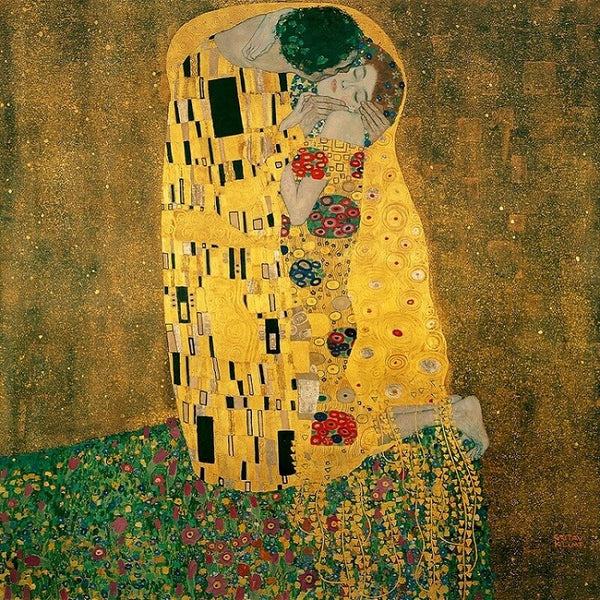Experience Travel Insights
Vienna 1900: Where Gilded Dreams Forged the Modern Mind
by Long Lin-Maurer • September 22, 2025

The Gilded Crucible: Understanding Vienna 1900 and the Dawn of the Modern Age
Fin-de-siècle Vienna was a city of dazzling, almost dizzying, contradictions. It was the magnificent capital of the sprawling, decaying Austro-Hungarian Empire; a city of imperial waltzes and avant-garde atonality, of gilded facades and dark, psychoanalytic depths. This was the city of Gustav Klimt and Egon Schiele, of Sigmund Freud and Ludwig Wittgenstein, of Gustav Mahler and Arnold Schoenberg. This nexus of tradition and rebellion, opulence and anxiety, created a cultural explosion that defined Viennese Modernism. To understand Vienna 1900 is to understand not just a moment in time, but the very crucible in which the intellectual and artistic currents of the next century were forged.
Come and experience travel!
Personally designed, seamlessly delivered – your journey, our expertise!
We are a boutique travel agency and consultancy specializing in Hub & Spoke Tours across Central Europe, the Benelux and the Dolomites.
The Ringstrasse: The Grand Stage of Turn-of-the-Century Vienna
The physical and symbolic heart of this era was the Ringstrasse, the grand boulevard that replaced the city’s medieval fortifications. Lined with monumental buildings in a pastiche of historical styles—Greek Revival for the Parliament, Gothic for the Votive Church, Renaissance for the State Opera—the Ring was the architectural embodiment of a confident liberal bourgeoisie. It was a stage set designed to project an image of timeless power and cultural supremacy for an empire that was, in reality, fracturing under the weight of nationalist tensions and social change.
This magnificent facade, however, masked a deeper unease. While the aristocracy and the newly wealthy paraded in their carriages, the city’s population was swelling with migrants from across the Austro-Hungarian Empire, leading to overcrowded housing and growing social discontent. The very grandeur of the Ringstrasse, a dream in stone, highlighted the growing chasm between imperial aspiration and societal reality. It was against this backdrop of performative certainty that the city’s intellectuals and artists began to question every accepted truth about art, society, and the human mind.
A Golden Age of Jewish Culture
It is impossible to speak of the intellectual ferment of Vienna 1900 without acknowledging the central, animating role of its Jewish community. Emancipated in 1867, Vienna’s Jews embraced the cultural and professional opportunities of the capital with extraordinary energy. They were not merely participants in the city’s golden age; in many respects, they were its primary architects.
In literature, writers like Arthur Schnitzler, with his psychologically astute plays and prose, dissected the moral complexities and hypocrisies of Viennese society. Stefan Zweig chronicled the “world of yesterday” with nostalgic brilliance, while Karl Kraus used his journal, Die Fackel (The Torch), to wage a war of words against journalistic clichés. In music, Gustav Mahler, as director of the Court Opera, revolutionized the institution, while his own symphonies captured the era’s blend of sublime beauty and existential dread.
This cultural flourishing extended to patronage and intellectual discourse. The salons of Jewish hostesses like Berta Zuckerkandl were vital hubs where artists and thinkers exchanged radical new ideas. It was in this environment that Theodor Herzl, a Viennese journalist, formulated the ideas that would launch modern political Zionism. The Jewish contribution was so profoundly woven into the fabric of this era that to remove it would be to render the entire tapestry meaningless.
The Vienna Secession: Artistic Rebellion in Fin-de-siècle Vienna
The artistic revolution was formally announced in 1897 with the founding of the Vienna Secession. Their motto, inscribed above their iconic exhibition hall, was “To every age its art, to every art its freedom.” Led by Gustav Klimt, these artists broke away from conservative historicism. Klimt’s work evolved into a unique symbolism, blending eroticism, allegory, and ornate gold leaf. His portraits of the wives of Vienna’s prominent Jewish patrons, like the famous Portrait of Adele Bloch-Bauer I, became icons of the age. This impulse also led to the creation of the Wiener Werkstätte, a craft collective dedicated to integrating high design into everyday objects.
Come and experience travel!
We design bespoke travel experiences with a perfect balance of cultural depth, efficiency and comfort.
Specializing in seamless hub-and-spoke journeys, we create well-paced, immersive itineraries tailored to your interests.
Yet, even within this movement, a further rebellion was brewing. Younger artists like Egon Schiele and Oskar Kokoschka rejected Klimt’s decorative beauty in favor of a raw, unflinching expressionism. Their twisted, psychologically charged portraits exposed the raw nerves beneath the city’s elegant surface.
This mission to strip away the superfluous found its most articulate champion in the architect Adolf Loos. In his seminal 1908 essay, “Ornament and Crime,” he declared decorative flourish a sign of cultural degeneracy. His buildings, like the stark Goldman & Salatsch building facing the Imperial Palace, were a radical statement against the historical cosplay of the Ringstrasse. For Loos, modernity demanded honesty, function, and a rejection of illusion.
Viennese Coffeehouse Culture: The City’s Intellectual Crucible
If the Ringstrasse was the city’s official stage, the Viennese coffeehouse was its intellectual living room. Establishments like Café Griensteidl and Café Central were not merely places to drink coffee; they were institutions, “factories of thought” where the price of a single cup bought the right to sit for hours with international newspapers, debate politics, or write poetry.
Here, architects sketched new designs on napkins, writers penned entire novels, and revolutionaries plotted the overthrow of empires. It was in a coffeehouse that Peter Altenberg wrote his aphoristic sketches and where a young Leon Trotsky debated Marxist theory. Viennese coffeehouse culture was the democratic, intellectual melting pot where all the explosive ideas of early 20th-century Vienna could be shared, challenged, and refined over a mélange and a glass of water.
Shadows in the City of Dreams: The Rise of Antisemitism
For all its creative brilliance, this period was pregnant with the catastrophes to come. The same anxieties that fueled artistic modernism also gave rise to virulent new forms of mass politics. Karl Lueger, the city’s enormously popular mayor from 1897 to 1910, built his career on a platform of sophisticated, populist antisemitism, skillfully redirecting lower-middle-class frustrations towards the city’s Jewish population.
This chilling paradox—that the city of Mahler and Freud was simultaneously a “school” for the ideologies of Adolf Hitler, who spent his formative years in Vienna—is central to understanding the complexity of fin-de-siècle Vienna. The intellectual flourishing occurred not in a vacuum, but in a climate of growing ethnic nationalism and racial prejudice that Sigmund Freud himself sought to understand through his exploration of the human psyche. The brilliance of this era was that of a twilight, a last, spectacular burst of light before the darkness of the Great War and its horrific aftermath descended upon Europe. To walk its streets today is to trace the very fault lines of the twentieth century.
Come and experience travel!
Our expertise lies in uncovering authentic stories, hidden corners, and behind-the-scenes experiences that bring destinations to life.
We design customized mindful travel experiences that seamlessly integrate mindful eating and mindful indulgence. These experiences foster self-care and create transformational journeys that nurture mental well-being, promote sustainable travel, and strengthen family connections.
Vienna 1900: A Cradle of Modernity
- Fin-de-Siècle Vienna: Culture and Modernity
An essay from The Metropolitan Museum of Art exploring the artistic and cultural ferment of fin-de-siècle Vienna, highlighting key figures and movements. - Viennese Modernism at MAK
Discover Viennese Modernism through the lens of the Museum of Applied Arts (MAK), focusing on the Wiener Werkstätte and design innovation of the era. - Wien Museum: Fin-de-Siècle Vienna
Insight into Vienna’s urban development, architectural styles, and social tensions around 1900, including influential works like those of Otto Wagner. - Sigmund Freud in Vienna
Explore the life and work of Sigmund Freud in Vienna, the birthplace of psychoanalysis, at his former residence, now a museum. - Arnold Schönberg Center: Life and Work
Delve into the revolutionary musical landscape of Vienna 1900 through the life and work of Arnold Schönberg, a pioneer of atonality. - Jewish Museum Vienna: Permanent Exhibition
Explore the vibrant Jewish cultural life and its profound impact on Vienna around 1900, as documented in the permanent exhibition “Our City! Jewish Vienna.” - Gustav Klimt at the Belvedere
Explore the iconic works of Gustav Klimt and the Vienna Secession movement housed at the Belvedere Museum, a cornerstone of Viennese Modernism. - Encyclopaedia Britannica: Vienna’s Fin-de-Siècle
An overview of Vienna’s ‘golden age’ and the fin-de-siècle, detailing the societal shifts and cultural brilliance during this transformative period. - University of Vienna: History of Science
Explore the scientific advancements and intellectual currents that characterized Vienna 1900, a hub of innovation in fields like medicine and psychology, through academic research. - House of Austrian History: From Monarchy to Republic
Understand the complex political environment and the transition of the Habsburg Monarchy around 1900 through the historical context provided by the House of Austrian History.
